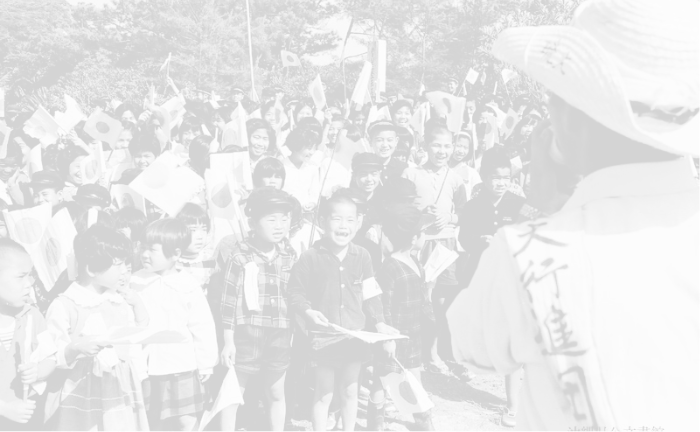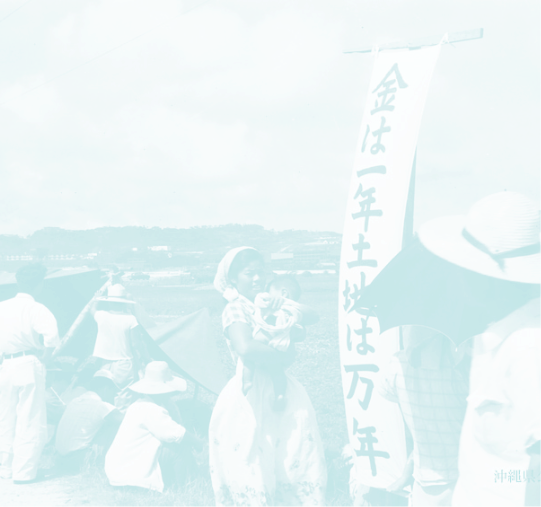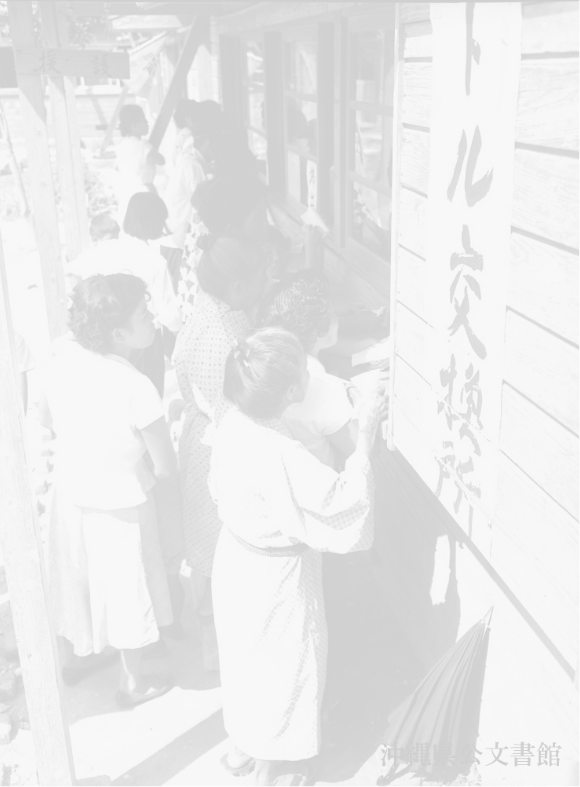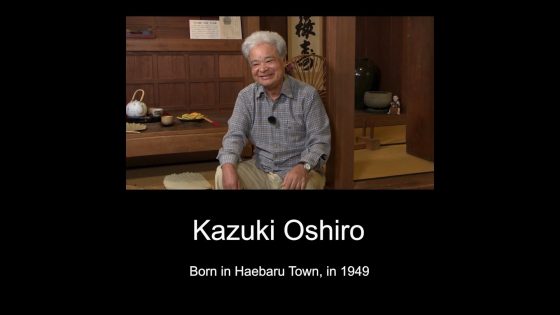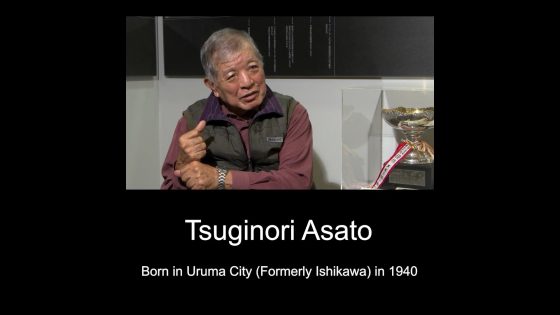
Twenty Years at the Ryukyuan-American Cultural Center
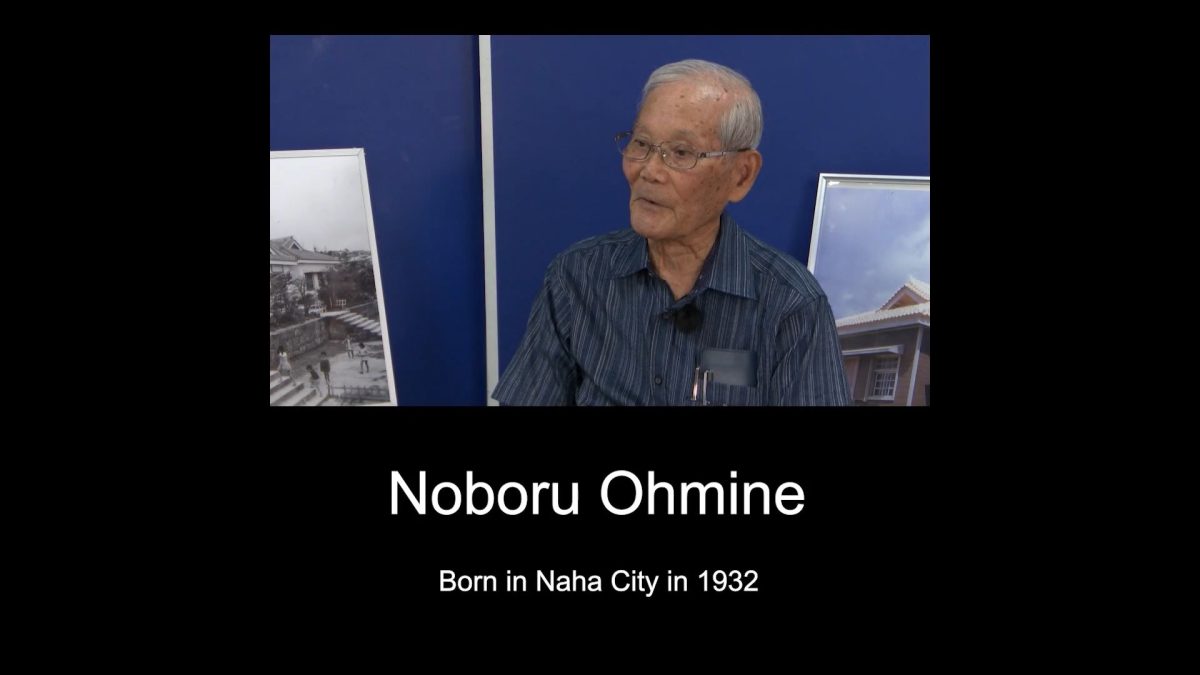

- Born in 1932
- Noboru Ohmine
Timeline
| 1944 |
Evacuated to Takaoka Town, Miyazaki Prefecture.
|
|
|---|---|---|
| 1946 |
Returned to Okinawa with his older brother in Oita, and stayed on Iriomote Island, where his father lived.
|
|
| 1951 |
Moved back to Naha with his family and began working at a motor pool in Naha.
|
|
| 1951 |
The Ryukyuan-American Cultural Center were established in Nago, Naha and Ishikawa.
|
|
| 1952 |
Became the exclusive driver for the Ryukyuan-American Cultural Center Supervisor (Mrs. Grace K. Yokouchi).
|
|
| 1952 |
The Ryukyuan-American Cultural Center were established in Miyako and Yaeyama.
|
|
| 1953 |
Moved from Nago Ryukyuan-American Cultural Center to work at Naha Ryukyuan-American Cultural Center.
|
|
| 1966 |
Trained for three months at the East-West Center in Hawaii.
|
|
| 1972 |
On May 15, Okinawa's administrative rights were returned to Japan. (Reversion of Okinawa)
|
|
| 1972 |
With the reversion of Okinawa to Japan, his 20-year tenure at the Ryukyuan-American Cultural Center came to an end.
|
Story
Brief biography of the witness
Worked as a staff member of the Ryukyuan-American Cultural Center from the age of 20 until the reversion of Okinawa to Japan in 1972. He was one of the first to introduce modern American social education to post-war Okinawa, and is well acquainted with the role of the Ryukyuan-American Cultural Center. His hobbies, such as collecting stamps, listening to records, and editing pamphlets and other materials, were learned during his time at the Cultural Center.
Life in Naha after the war
Returning from Evacuation and Life Afterward
In September 1946, I returned to Okinawa with my brother, who was in Oita at the time. Okinawa was already in ruins. So I returned to Iriomote Island, where my father was. I lived there for about four years. Then I was brought back to Naha and remain there to this day. I came to Okinawa’s main island in September, and the following year, in January 1951, I got a job at a parking lot in Naha. I wanted to study automobile-related technology. From there, when I got my driver's license, several cars from my company lot were sent to the US Civil Government. I was in charge of one of them. The current Ueyama Junior High School was used by the US Civil Government at the time .It was a USCAR [US Civil Government of the Ryukyu Islands] facility.
Involvement with the Ryukyuan-American Cultural Center
Working as a Driver for the Ryukyuan-American Cultural Center’s Supervisor
In 1952, Ms. Yokouchi was appointed to be in charge of Nago. She commuted to Nago every day. Since she went there every day, and she wanted the same driver, I became Ms. Yokouchi’s private driver.
Meeting Ms. Yokouchi
Ms. Yokkaichi’s full name was Grace K. Yokouchi. Our first encounter was good. Ms. Yokouchi was very happy and treated me more like her own child than a driver. Her oldest daughter was the same age as me. I think she treated me as if she were looking at her own child. I think her position was more “supervisor” than “museum director.” Rather than supervising people like she was supervising the Cultural Center as a whole, she oversaw all the various events at the Cultural Center.
Ryukyuan-American Cultural Center Locations around Okinawa
There were five Ryukyuan-American Cultural Center locations in Okinawa. There was also one in Amami, but it disappeared when Okinawa was returned in 1953.The five in Okinawa were in Nago, Ishikawa, Naha, Miyako, and Yaeyama. I think there were about 12 to 13 employees in Nago. I think it was a little more in Naha. The Ryukyuan-American Cultural Center had a library and an event department, but I don't think there were that many extramural activities back then. Ms. Yokouchi went to women's associations and other places. She researched various things there. She tried to bring out the local culture, and she introduced it to the US side. It seems like she did that kind of thing a lot. Back then, each village did Eisa music and dancing. Bringing such things together and introducing them to Americans was the beginning of the postwar Eisa festivals. It seems like they've held them dozens of times now in Koza (now Okinawa City), but I think they started in Nago before that. In the event department, we discussed various things. Each person proposed various ideas that they had. And then everyone worked together to try to do them. I think it was better that we thought about it ourselves and implemented things from the bottom up, rather than receiving orders from above. I think that's what caused it to last so long.
Leaders of the Ryukyuan-American Cultural Center
When Ms. Yokouchi came, each building had a supervisor. Then one or two people went back to the U.S. In the end, the only one left was Ms. Yokouchi and a foreigner named Pumroy, who was at Ishigaki at the Yaeyama Cultural Center at the time. There was a woman named Plank at the Naha Cultural Center. She left Japan partway through her time there, around 1953.There was also someone at the Ishikawa Cultural Center, but I don't know much about them. The supervisor reported the various events for the week to USCAR.Ms. Yokouchi often typed on his typewriter.
Working at the Ryukyuan-American Cultural Center
Working at the Nago Ryukyuan-American Cultural Center
In Nago, my main job was Ms. Yokouchi's driver. In addition to my job as a driver, I also helped with the library and did other jobs, such as handling the projector. That was around the time of the B yen [US military currency].The pay wasn't very good.
What I Learned through My Work
When I was working in Nago, my hobbies and work were similar, so I learned how to take pictures for events, and I also listened to music. I listened to music only a little in Nago. And that's when I started collecting stamps. I started collecting stamps in Nago. There was also a stamp exhibition at the Naha Cultural Center. At the Naha Cultural Center, there was a person named Shimoji who collected stamps.
Utilization of Local Human Resources
In the end, hiring local people expanded our connections with people. Community activities became easier. I think they were trying to draw out those kinds of people and let them do better work.
Cultural Exchange through Women's Activities
That's how I found cooperation through women's activities. The wife of Mr. Ogden [Deputy Secretary of Civil Affairs in the United State] ran a gift shop at the Rycom facility. There were baskets woven from bracken made in Nakijin and elsewhere, as well as rolls of cloth and mats from Kijyoka. We introduced these things and put them in the Ryukyu Shop, and through that relationship, we became close and I think we started talking about cultural exchange. Introducing the best things about Okinawa to the US was in line with the guidelines for the establishment of the Cultural Center, so I think this was how Ryukyu-American cultural exchange began. At one point, Ms. Yokouchi came back from her return to America, so I moved from Nago to Naha Cultural Center and worked with her again. In her second assignment, she worked in Naha and went to Nago on the weekends to prepare various reports and such. Ms. Yokouchi was looking at the entire cultural center at the Naha Ryukyuan-American Cultural Center, rather than inside USCAR. She had also been to Miyako and Yaeyama.
Activities at the Naha Ryukyuan-American Cultural Center
The Naha Ryukyuan-American Cultural Center
At the Naha Ryukyuan-American Cultural Center, I left my job as a driver and did various things on my own, and the person who recognized me was Samuel N. Mukaida. I think the activities of the Cultural Center blossomed during Mr. Mukaida's time. Record listening parties had been around for a long time. I took over what Mr. Shimamoto, the deputy director, was doing. The record listening parties started in Nago. It was a very big job for me to broadcast recorded music on Far East Broadcasting for about four years. Before Okinawa was returned to Japan, I would hold these parties. This was work that ordinary people didn't do, and it has become a treasure to me. It was different from broadcasting. At first, they were called “Saturday concerts” because they were held on Saturdays, so when we did more on the second Friday of the month, they were “Friday concerts.” I couldn’t even try to count how many we did. Mr. Mukaida taught me this silk screen technique. We did it every Friday. This is all handmade too. We didn’t do it with the person in charge before him. What do you think this is? This is made by cutting the trunk of a Japanese banana tree, and I made a mold using the cut surface. This also uses the wood grain of the board.
Activities of the Children's Club
So, the Children's Club. The previous person in charge went to study in the US, so I took over what had been there for a while. The goal was to create a Children's Club not only in Naha, but also in other regions, to let children interact and bring out the best in one another. That was the aim of starting one in Ibara (currently Nanjo City).The Children's Club continued from around 1963 until just before Okinawa was returned to Japan. We went camping in the summer. For transportation, we used a US military bus. Rather than doing it myself, I contacted USCAR and had them dispatch a bus from there. At one point, we created a one-day program called Day Camp at Ibara. On that day, we went to the beach, but we got there at low tide. I didn't think about that. For Children's Club, in 1964, we did a puppet show on Ryukyu Broadcasting on Children's Day. The broadcast station suggested the idea. Since it was Children's Day, the Children's Club program was going to be broadcast. So the kids did everything. No adults. It went on TV. We recorded only the audio on tape. The title was “Teacher’s Pocket.” The story was about trying to find what was inside the teacher's pocket. I received training at the East-West Center. The High Commissioner consulted with the US civil government and issued permission.
Training in Hawaii
There was a document with the commissioner's signature. I received training at the East-West Center. The High Commissioner consulted with the US civil government and issued permission. Although it was the East-West Cultural Center, the partner for training was Honolulu City Hall. There was similar work in that city hall. But rather than training there, we mostly just played with the kids. Elementary schools in Hawaii were not like Japanese schools, and were smaller. There was a very large plaza near the school, and on the other side there was a recreation center. After school, the children went over there and did various things. That's similar to the Cultural Center. When the parents finished work at 5:00 p.m., they come to pick up their children. People would say that society as a whole was watching over the children. I thought that kind of system was very good.
Treatment of the Staff
There may have been other systems like this. If we passed a simple test in English, we received a 10% bonus on our salary. The test was easy, so I passed it right away. When my salary went up, so did this bonus. This was not issued by USCAR. It was a permit pass issued by the US military. All of the military employees had a card like this.
The role of the Ryukyuan-American Cultural Center
The Role of the Ryukyuan-American Cultural Center
It sounds grandiose to say, but in those days the Cultural Center provided culture to where there was nothing after the war. In other words, I think it was the center of cultural activities in Okinawa. It was a system that did not exist in Japan at the time. As for Okinawa’s return to Japan, the return itself was a good thing, but it is sad that the good activities we worked so hard to do went away. It's really a shame. We never worked as US agents or anything like that. The budget was provided by the US side, but the people we work with are Okinawan people. It hurt a little when people would refer to me as a pawn of the Americans or whatever. The people who have used the Cultural Center said that it was a really good place. It really felt like a shame to lose it.
In My Own Life
The Cultural Center was built in 1951 and lasted for 20 years, until 1972. For me, it was 20 years, from when I was 20 to when I was 40.That period of my life, working at the Cultural Center, was really fulfilling. I think it helped me develop my character. If it weren't for the Cultural Center, I don't know what I would be doing now. I think the time I spent there was a great use of 20 years.
